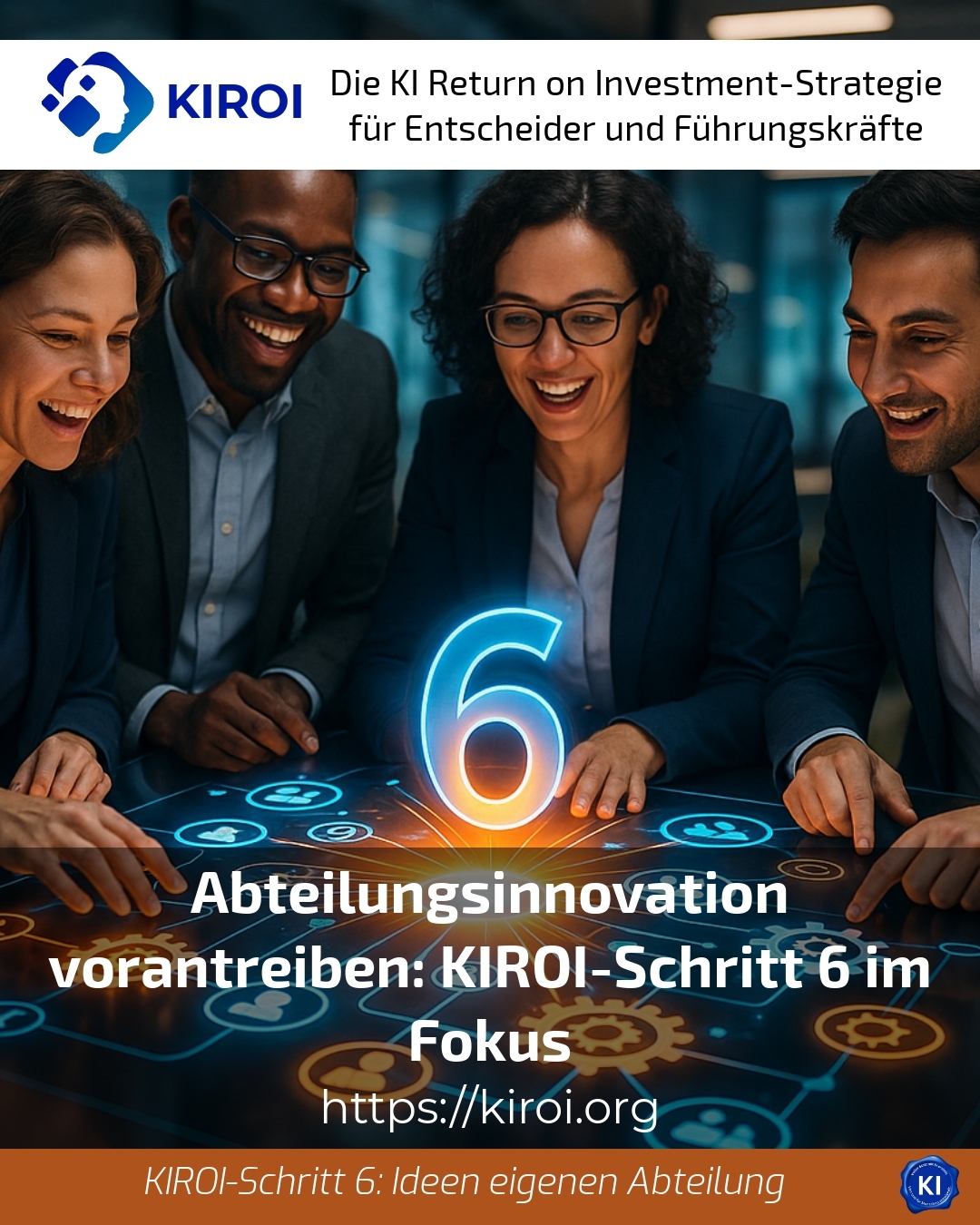Departmental innovation: focus on increasing efficiency and promoting creativity
Departmental innovation is a key building block for companies that want to remain competitive. This involves developing new ideas within the individual departments in a targeted manner and implementing them sustainably. With the right support, as offered by the sixth step of the KIROI strategy, teams can be helped to recognise their individual potential and use it in a practical way without being overwhelmed.
Providing impetus - how departmental innovation succeeds
In departmental innovation, it is important to provide employees with sources of inspiration and tools to drive innovation forward in a targeted manner. AI-supported sensor solutions can help to improve product quality and reduce downtime, particularly in technical areas. In sales, the analysis of customer data enables the creation of personalised offers that generate greater customer loyalty. Similarly, AI-supported selection processes provide the HR department with better opportunities to find suitable applicants and boost staff motivation.
Practical examples from various industries
KIROI BEST PRACTICE at ABC (name changed due to NDA contract) The error rate in the production department was significantly reduced through the use of intelligent sensor technology. This significantly reduced unplanned downtime, which noticeably increased efficiency. At the same time, employees were trained to use the new systems effectively and make their own suggestions for improvement.
KIROI BEST PRACTICE at DEF (name changed due to NDA contract) The sales team was supported by targeted analyses of customer data. The AI tools helped to create precise customer profiles, allowing offers to be customised and therefore placed more successfully. The process showed that departmental innovation has a direct impact on sales.
KIROI BEST PRACTICE at GHI (name changed due to NDA contract) AI-supported applicant selection tools were introduced in the HR department. This not only made pre-selection easier, but also led to better matching between candidates and job profiles. As a result, employees were able to focus more specifically on their core tasks. The departmental innovation was therefore seen as a success.
Support and sustainable implementation are key
The sustainable implementation of innovations in one's own department is often not achieved through technical solutions alone. Rather, it requires support that also takes cultural and organisational aspects into account. Workshops to develop ideas strengthen the creativity of the workforce and promote the acceptance of new approaches. Pilot projects can test feasibility before a larger rollout and thus minimise uncertainties.
Examples of accompanying measures
Regular workshops encourage employees to contribute their own ideas and develop them further together. Accompanying training courses impart the necessary skills in dealing with new AI applications. This not only expands expertise, but also encourages a willingness to embrace change.
KIROI BEST PRACTICE at JKL (name changed due to NDA contract) A continuous innovation process was established in the finance department through interactive workshops. Employees were able to actively contribute their own suggestions, which significantly increased the quality of the new AI solutions. This participatory support proved to be crucial to the success of the project.
KIROI BEST PRACTICE at MNO (name changed due to NDA contract) The introduction of new AI-supported tools in the sales department was accompanied by targeted training. This allowed technical barriers to be removed and employees gained confidence in dealing with the innovations. The support enabled rapid and sustainable acceptance.
Utilising departmental innovation to increase competitiveness
Companies that specifically promote their departmental innovation create decisive advantages for themselves. The improvement of internal processes, the development of new services and the greater involvement of employees help to increase innovative strength. This enables companies to react more flexibly to market changes and improve their competitive position.
In its sixth step, the KIROI strategy offers structured support to help companies realise their departmental innovation with a focus on AI technology. It is not about quick solutions, but about sustainable development that involves everyone involved. Clients often report that these impulses promote new ways of thinking and enable innovative results.
My analysis
Departmental innovation is not a sure-fire success. It requires targeted impetus, accompanying support and the involvement of all employees. This is the only way to develop ideas that can be implemented in practice and have a long-term impact. The KIROI steps promote this approach by providing a clear framework and at the same time leaving room for creative development. Companies that take this approach can expect improved efficiency and increased innovative capacity.
Further links from the text above:
[1] Mastering departmental innovation: Step 6 to the top idea with KIROI
[3] AI as a threat or an opportunity in times of skills shortages?
[5] KIROI Step 6: Own department - AI to increase efficiency and innovation
For more information and if you have any questions, please contact Contact us on the topic or read more blog posts on the topic Artificial Intelligence Blog here.















